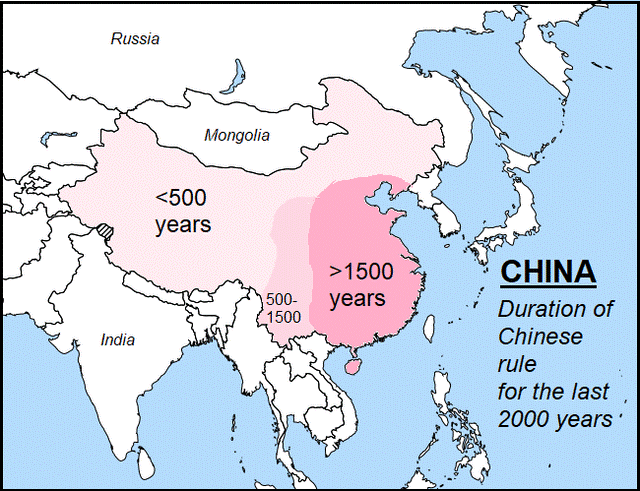 By Neenah Payne
By Neenah Payne
China’s First Emperor: Qin Shi Huang explains that China was created over 2,000 years ago when Ying Zheng (259-210 BCE) from the Chin province united the seven warring states of Chin, Zhao, Wei, Han, Chu, Yan, and Qi. He became Emperor Qin Shi Huang, the first emperor of China. As a founder of the powerful Qin Dynasty (221-207), he was the first monarch in China to be called an emperor.
For the first time, the nation was unified with a single written language and a system of administration that are still used today. Qin Shi Huang standardized the Qin script and unified the currency and units of measurement. He built a series of transport links such as roads and the impressive Lingqu canal.
Qin Shi Huang laid the basic structure of China’s political system for the next 2,000 years. He had the Great Wall of China built to keep out Xiongnu tribes from the north and to seal the empire he had established. It was the biggest building project of the ancient world at 30 feet high and 2,000 miles long. At its peak of production, over a million people were enslaved to build the wall – perhaps 25% died in the process.
When Qin Shi Huang founded the imperial dynasties of China, he became the most powerful man on Earth, one of the world’s greatest legends who left a legacy the likes of which had never been seen before or since. See China’s First Emperor: Role Model For Globalists Now?
The video below explains that the Chinese government lasted in much the same form from 150 BC to 1911 AD. Only ancient Egypt was founded earlier and lasted longer – but has not survived into today’s world. After the Egyptians, the Chinese were also among the first to record their history.
2,000 Years of Chinese History! The Mandate of Heaven and Confucius 3/8/12
Ancient China’s Contributions To The Modern World
The Amazing Silk Road Returns! shows that after Venetian merchant Marco Polo (1254 –1324) traveled the Silk Road to China from 1271-1295, his book The Travels of Marco Polo enthralled Europe with tales of the wealth of the East. It tantalized Europe with news of China’s immense wealth and advanced civilization and was one of the most influential books in history.
Swedish Explorer Sven Hadin wrote in The Silk Road,
It can be said without exaggeration that this traffic artery through the whole of the old world is the longest, and from a cultural-historical standpoint, the most significant connecting link between peoples and continents that has ever existed on Earth.
Christopher Columbus sailed West to find a safer route to the East than the dangerous Silk Road from Italy to China and died thinking he had reached India. That’s why the indigenous peoples of the Western hemisphere are mistakenly called “Indians” today. The Chinese invention of the compass made such a trip possible. The Chinese invention of gunpowder allowed Columbus and all the Europeans who followed him to the Western hemisphere to conquer that part of the world.
In 850 AD, China had invented paper – which made Marco Polo’s book possible. Favorite commodities from Asia included silk, jade, porcelain (“fine China”), tea, pearls, ivory, and spices (pepper and cinnamon). It is hard to overstate the importance of the Silk Road. Ancient China was 1,000 to 2,000 years ahead of the West technologically. The exchange of information gave rise to innovations that changed the world and affect us today.
How China Created The Modern World lists 38 Chinese invention that revolutionized the world including the compass, fireworks/gunpowder, moveable type printing, paper money/bank notes, mechanical clocks, porcelain (fine “china” – cups, bowls, plates), matches, seismographs, oil drilling, rockets, suspension bridges, paper (newspapers, books, wrapping paper, boxes, facial tissues, toilet paper), rudders. deep drilling, wheelbarrows, adjustable wrenches, acupuncture, lacquer, blast furnace, stirrups, crossbows, hang gliders, abacus, row crop farming, moldboard plow, kits, iron smelting, the seed drill, umbrella, decimal system, bronze, noodles, tea production, silk, waterwheels, and alcohol.
China’s Century of Humiliation: 1839-1949
Christopher Columbus opened the “Age of Discovery”. With colonial expansion, Europe developed a trade monopoly. Europe was brought out of the Dark Ages by many inventions of the Arabs during The Golden Age of Islam from 750-1258. By the mid-19th century, the introduction of the steam engine led to a transition in Europe from a hand-crafted economy to the Industrial Revolution based on machine-powered mass production.
As Europe embarked on widespread colonization, the caravans on the Silk Road began to disappear and, after a millennium of prosperity, the Silk Road went into decline. Europe became enriched through the amazing inventions of the Arabs and through colonization of the Americas, Australia, Asia, as well as its enslavement and later colonization of Africa. Rather than a mutually-beneficial exchange of goods and knowledge, Europe launched a campaign of destruction on ancient civilizations in the Americas and in China.
Dr. Martin Jacques – How China will change almost everything explains that until the mid-19th century, the Chinese economy was the largest in the world. It represented one third of the global economy. China accepted only silver in exchange for the many goods the West wanted. Britain tired of paying in silver decided to find another commodity. It found a way to seduce the Chinese to accept opium!
The British Opium Wars in 1840 forced China to open. That led to China’s “Century of Humiliation” and China went into precipitous decline in the 19th century.. By the end of the 19th century, China was occupied by many foreign powers. Britain took Hong Kong and Portugal got Macau. Britain returned Hong Kong to China in 1997 and Portugal returned Macau in 1999.
China’s Century of Humiliation 6/16/17
“China’s century of Humiliation” explores the fundamental differences between the Western and Chinese culture from early beginnings. The film investigates why the industrial revolution did not take place in China, despite its many early inventions, but in Europe.
“China’s Century of Humiliation” sheds light on the first economic and military encounters between the British and Chinese Empires through the eyes of Asian and Western historians. Trade deficits, war threats and reprisals have marked the 19th century as one of the bloodiest and most shameful in Chinese history.
Nixon and Deng Xiaoping Opened China In 1979
The Opening of China: President Nixon’s visit to China in 1972 with Henry Kissinger allowed the world to view images of China for the first time in over two decades. The move proved to be a geopolitical game changer – ending nearly 25 years of non-communication. The “Week that Changed the World” culminated in the announcement of the joint US-China Communiqué in Shanghai.
Deng Xiaoping was Chairman of the Central Advisory Commission from 1982-1987. After the death of Mao Zedong, Deng led China through a series of far-reaching market-economy reforms that earned him the reputation as the “Architect of Modern China”. Deng’s visit to the US in 1979 initiated a series of high-ranking exchanges that continued until 1989. Although he never held office as the head of state, Deng introduced a new brand of thinking that combined socialist ideology with free market enterprise. He opened China to foreign investment, policies that are credited with developing China into one of the fastest-growing economies in the world and raising the standard of living of hundreds of millions.
When Deng focused on economic growth, China began making cheap goods for export. That became China’s engine of transformation. In 1980, the Chinese economy was five percent of the American economy. China now has the biggest car market in the world – about 30% bigger than the American market.
The photo below shows President Nixon with Premier Chou En-Lai (1898-1976), Mao’s third successor. When he fell ill with cancer, he made Deng his successor. In February 1973, Deng returned to Beijing when Zhou brought him back from exile to focus on reconstructing the Chinese economy.
What If Richard Nixon Had Never Gone to China?
The video below explains that 18 farmers in rural China who defied the policies of Mao and risked their lives to farm their own plots were supported by Deng Xiaoping rather than killed as they knew they might be. They are now honored in a museum! In one generation, Deng’s policies lifted about 600 million people out of poverty with his “One Child Policy” and by opening up China up for development. However, that same policy has now resulted in a dangerously low birth rate that is threatening China’s future as shown in The End of The World Is Just The Beginning.
How Deng Xiaoping Changed China Forever 7/2/22
In 1978 China under Mao Zedong, the economy was poor and people were dying of starvation. This is the story of how the revolutionary leader Deng Xiaoping created one of the biggest economic transformations in history in just one generation and brought the country out of poverty.
Deng Xiaoping: A Political Biography 12/12/14
Amazon Description
One of the most important figures in global politics during the second half of the 20th century; Deng Xiaoping is generally considered the central figure behind China’s economic liberalization programme that produced historically unprecedented growth rates and development beginning in the late 1970s.
Lifting nearly a billion people out of poverty, Deng Xiaoping’s ‘Four Modernisations’ called for reform in agriculture, industry, military, and science and technology. Today these reforms are considered to be the crucial turning point in modern Chinese history, enabling China to effectively harness its previously-latent power in its quest to become a global economic superpower. Just ten years after this tremendous achievement, Deng’s brutal suppression of the democracy movement at Tiananmen Square severely undermined his international and domestic reputation.
To explain the seeming contradictions between Deng Xiaoping’s desire for economic liberalization and political conservatism, Michael Dillon’s biography utilizes recently-released Chinese sources to detail Deng Xiaoping’s emergence from a minority, second-class community in the Sichuan province, via education in France, to his meteoric rise to the top of the CCP’s political hierarchy, illustrating the ways in which his life of struggle and survival shaped his political career.
Dillon’s biography addresses Xiaoping as both an intensely committed communist capable of playing a principal role in the Great Leap Forward from 1958 to 1961, while incurring the wrath of Mao only ten years later as he was exiled and purged during the Cultural Revolution.
Emphasizing Deng Xiaoping’s effectiveness as a party operator and political bruiser rather than an intellectual capable of formulating the reforms for which he eventually took credit, this book sheds light on Deng’s ability to capitalize upon the planning expertise of other party members. This biography of the central figure in China’s economic liberalization is essential for any reader interested in or affected by China’s rise to global prominence.
“Deng Xiaoping has generally been given the credit for the reforms of the late 1970s that put China on the path to spectacular economic growth and development, a process that has turned it into one of the greatest powers of the twenty-first century. His ‘Four Modernisations’ — reform in agriculture, industry, military, science and technology — unveiled at the Third Plenum of the Central Committee in 1978 undoubtedly paved the way for China’s rise to superpower status.
Yet, only a decade after this, his greatest achievement, Deng fell dramatically from grace, becoming reviled both within and outside of China as the man responsible for crushing the democracy movement in the carnage of Tiananmen Square. In this book, Michael Dillon uncovers the true story of Deng Xiaoping, using recently-released Chinese sources. He shows how Deng was able to be a force for reform whilst at the same time being resistant to the consequences of political modernisation and uncovers the influences which shaped the statesman’s career – a life of struggle and survival.”
Stunning Transformation of China
Shanghai’s Remarkable Transformation: From Village to World Class City
China Then & Now Chongqing 7/18/21
We go back in history to show you the massive change in Chongqing China. Chongqing also known as the bridge capital of China, this commercial and industrial hub boasts more than 14,000 bridges and deep tunnels. Despite its mega-size, it’s highly functional, modern and efficient, connecting people and china, where transportation is the backbone for this rapidly expanding and growing urban city.
In 1929, Chongqing was officially established as a municipality, and in 1937, Chongqing became the wartime capital of China during the Sino-Japanese war. Chongqing remained the capital of China for eight years and five months. With a history stretching 3,000 years, Chongqing has been an important political, economic and strategic centre in China’s west. It is known as a “mountain city” owing to its rugged terrain and steep gorges. The rest of the country also calls it one of China’s four “furnaces” as it becomes hot and humid in summer.
China’s SHOCKING! Rise | Then and Now | 1922-2022 7/24/22
Since China began to open up and reform its economy in 1978, GDP growth has averaged almost 10 percent a year, and more than 800 million people have been lifted out of poverty. There have also been significant improvements in access to health, education, and other services over the same period. China is now an upper-middle-income country. It will be important going forward that poverty alleviation efforts increasingly shift to address the vulnerabilities faced by the large number of people still considered poor by the standards of middle-income countries, including those living in urban areas.
China’s high growth based on resource-intensive manufacturing, exports, and low-paid labor has largely reached its limits and has led to economic, social, and environmental imbalances. Reducing these imbalances requires shifts in the structure of the economy from manufacturing to high value services, and from investment to consumption. Over the past few years, growth has moderated in the face of structural constraints, including declining labor force growth, diminishing returns to investment, and slowing productivity.
The challenge going forward is to find new drivers of growth while addressing the social and environmental legacies of China’s previous development path. China is a growing influence on other developing economies through trade, investment, and ideas. Many of the complex development challenges that China faces are relevant to other countries, including transitioning to a new growth model, rapid aging, building a cost-effective health system, and promoting a lower carbon energy path.
Following real GDP growth of 8.1 percent in 2021, growth is projected to slow to 5.0 percent in 2022. The forecast reflects rising headwinds: Domestic demand has slowed, and the global economic environment has worsened significantly with the war in Ukraine. In addition, COVID incursions have become more frequent and widespread. China is currently experiencing the largest COVID wave since the end of the national lockdown in March 2020.
In the face of these shocks, the authorities have announced a significant loosening of policy. The 2022 budget leaves room for a fiscal boost of up to 2.7 percent of GDP. Risks are firmly on the downside and include a stronger than expected global slowdown, a longer lasting commodity price shock, and more severe financial stress among property developers. China also remains at risk of re-escalating COVID outbreaks, which could lead to significant economic disruption. In a downside scenario, economic growth could slow to 4.0 percent in 2022.
An important element of such a shift is a reduction in the inequality of economic opportunities. The government has highlighted achieving common prosperity as a key economic objective but has not yet defined specific policies to reach this goal. More progressive taxation and a strengthened social protection system could protect the most vulnerable, reduce inequality and help boost private consumption as a driver of growth.
How China became a superpower: 40 years of economic reform 12/18/18
40 Years ago China opened up its economy to the rest of the world. A move, that ultimately turned China into a global economic powerhouse, second in GDP only to the US. Today China looks back over four decades of economic reform that have made it one of the most powerful economies in the world. In his speech at the Great Hall of the People in the Chinese capital Beijing Chinese President Xi Jinping vowed to press ahead with economic reforms. But he also made clear that Beijing will not deviate from its one-party system or take orders from any other country. His comments come as the United States demands more transparency in trade relations with Beijing.
Will China Collapse In 10-20 Years?
The End of The World Is Just The Beginning explains that Peter Zeihan, author The End of the World is Just the Beginning: Mapping the Collapse of Globalization, is an “expert in geopolitics: the study of how place impacts financial, economic, cultural, political, and military developments.” Zeihan predicts the end of China as an economic entity within 10 years and as a political entity in 10-20 years.
However, Zeihan has been predicting the collapse of China since 2010. The next article in this series explains why American billionaire investor and hedge fund manager Ray Dalio disagrees with Zeihan.
Neenah Payne writes for Activist Post
Become a Patron!
Or support us at SubscribeStar
Donate cryptocurrency HERE
Subscribe to Activist Post for truth, peace, and freedom news. Follow us on SoMee, Telegram, HIVE, Minds, MeWe, Twitter – X, Gab, and What Really Happened.
Provide, Protect and Profit from what’s coming! Get a free issue of Counter Markets today.

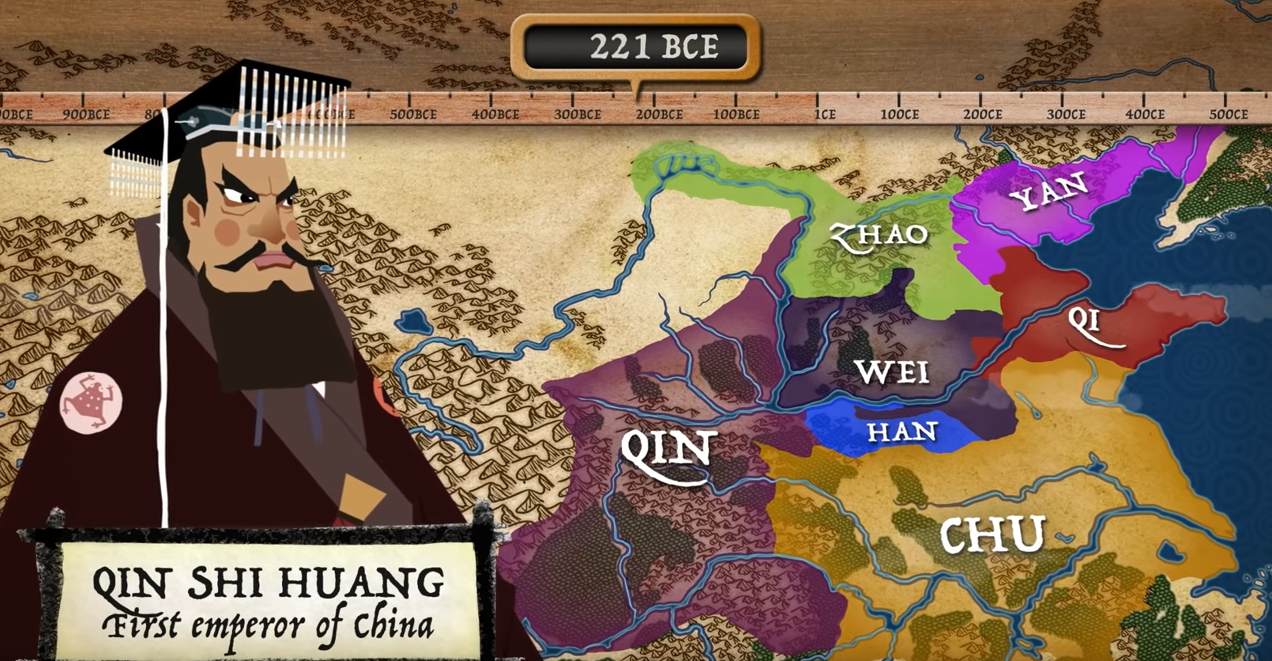
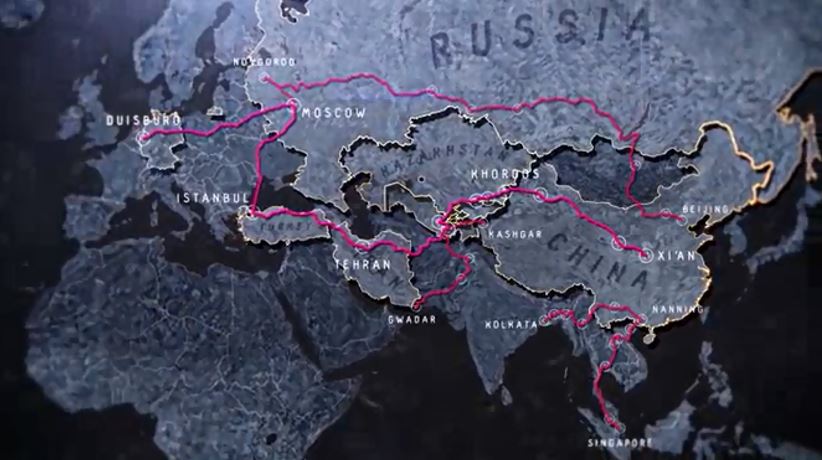
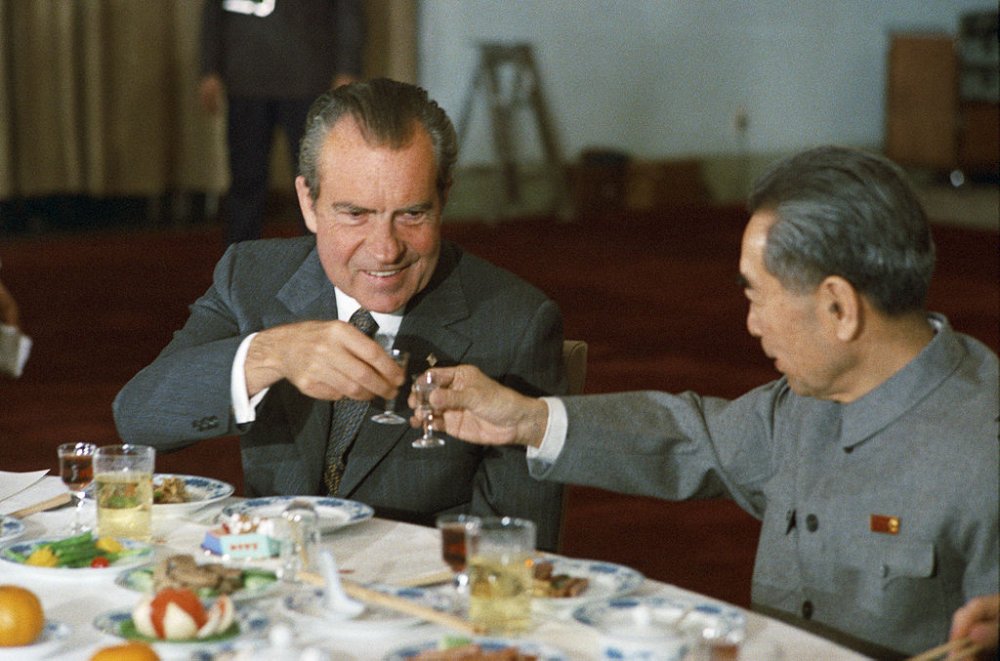

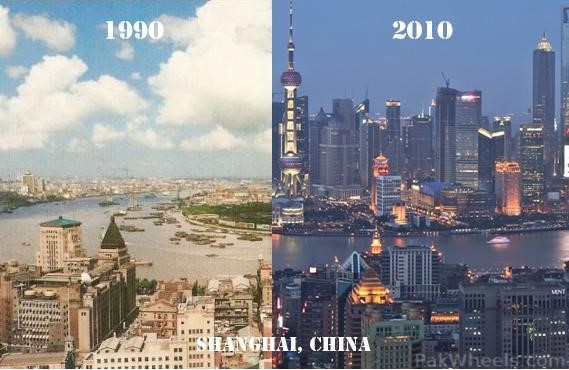
Be the first to comment on "China’s Amazing Global Role For 2,000 Years"